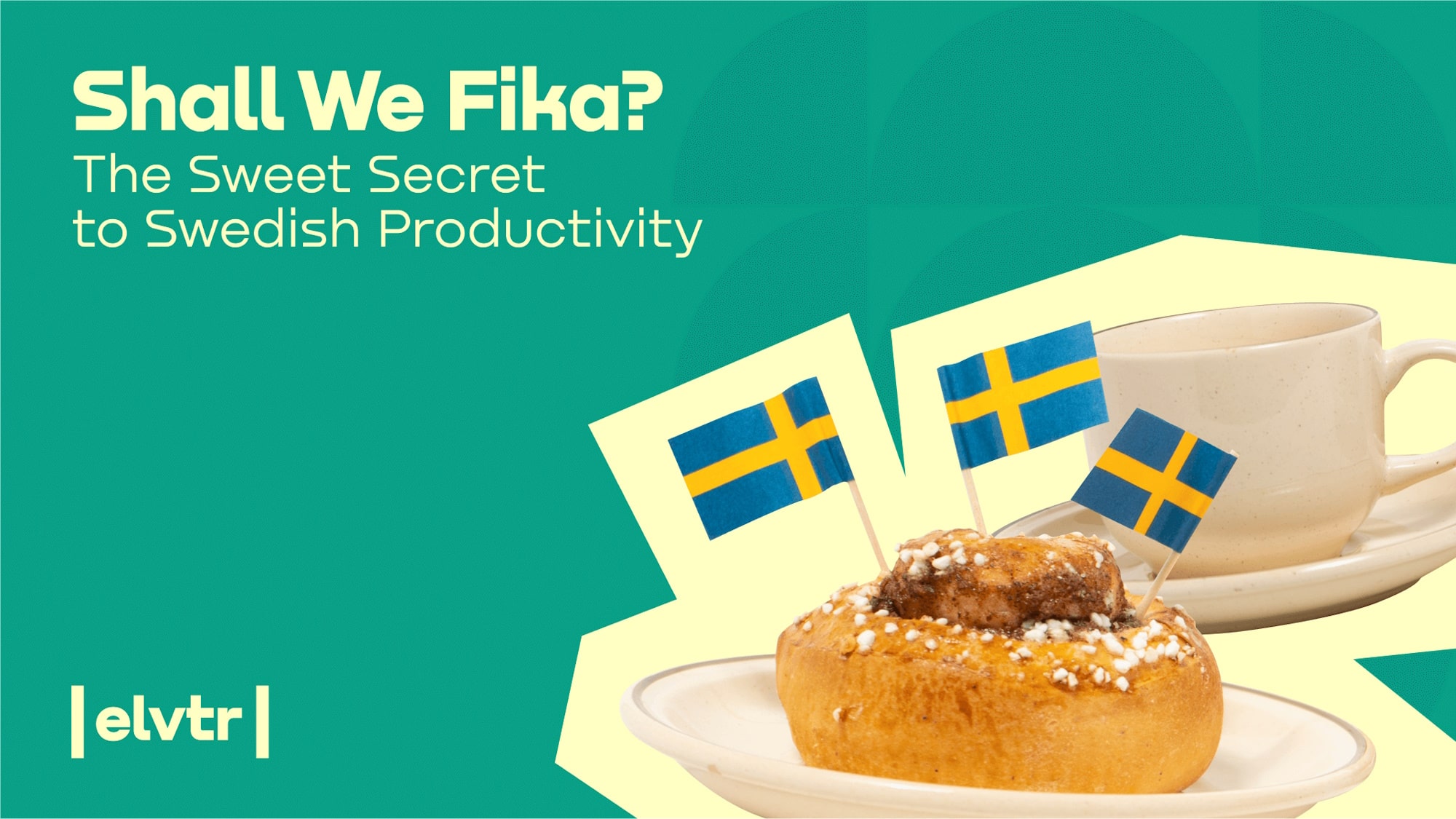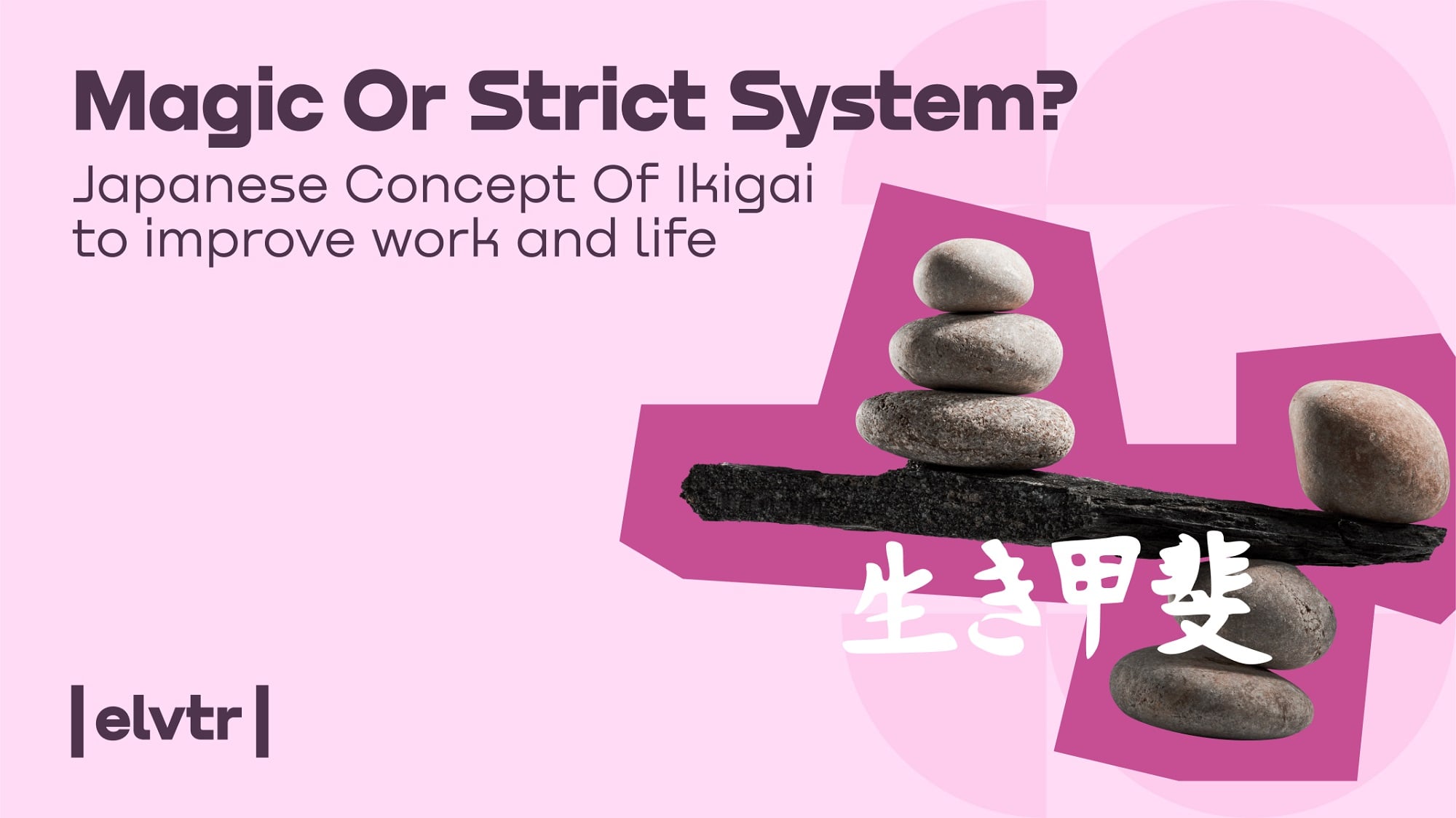- MAIN PAGE
- – elvtr magazine – SHALL WE FIKA? THE SWEET SECRET TO SWEDISH PRODUCTIVITY
SHALL WE FIKA? THE SWEET SECRET TO SWEDISH PRODUCTIVITY

In Sweden, it's obligatory to drink coffee with a pastry. No, really. At many companies from Malmo to Stockholm, all employees must have time during the day to do fika and relax. And this trend has gone global.
The Swedes' habit called "att ta en fika" or simply "fika" involves taking a break with friends or colleagues to enjoy coffee and sweet pastries. It has made Swedes champions in coffee consumption, with a per capita annual consumption of 8.2 kg (18 lb) of coffee, ranking 6th in the world. Furthermore, the tradition has contributed to Swedes being recognised as some of the most productive workers in the Universe. We've highlighted what their secret is.
From a Drink of the Rich to an Everyday Tradition: What is Fika and How Did It Originate?
There are many untranslatable words in the Scandinavian languages which people from other countries have been trying to understand and apply in their life for decades. The whole world comprehends the secrets of lagom, hygge, and lykke. The Swedes value their cultural code, so they don't translate the word fika either, so as not to turn an old tradition into an ordinary coffee break.
Fika is as much a part of the working day in Sweden as emailing and fixing the printer. It's deeply ingrained in Swedish culture. Most Swedes have fika several times a day, whether it is at the weekend or during the business week.
The history of fika is associated with the spread of "kaffe och kaka". This is how the expression "coffee and cookies" sounds in Swedish. Before the High Renaissance period coffee in these territories was made on a surrogate with an admixture of chicory and several types of coffee beans. Real coffee was brought to Sweden in the late 1600s. At that time it was the privilege of upper classes, whose meetings called kafferepen over coffee and joint work, for example, for embroidery, were akin to British tea ceremonies with afternoon tea and nibbles.
By the 1800s, coffee became a popular drink among all strata of society. Although people still rarely drank it — mostly on weekends or when friends/relatives came, or on holidays. First, they prepared fikabröd — coffee break pastry. Then, they took out small porcelain mugs called mockakoppar. Drinking coffee was a festive and beautiful process.
Somewhere along the way, the concept of fika was born. The regulation of official breaks for factory workers played a significant role in its popularisation. The first known use of the word fika itself appears in records dated just over 100 years ago. By the way, fika is not only a noun. The Swedes also use it as the verb "att fika".
From Eliminating Mental Fatigue to Successfully Signing Contracts: The Scientific Benefit of Swedish Coffee Break
Nowadays, Swedes spend 9,5 days in total each year having fika. It is so ingrained in Swedish tradition that some companies add a special clause to job offers that employees are entitled to a fika break. Even the country's brand Ikea has a paragraph about Swedish coffee break on its corporate website: "More than a coffee break, fika is a time to share, connect and relax with colleagues. Some of the best ideas and decisions happen at fika." But do all these regular coffee breaks make for a more efficient workforce and signing business contracts?
First of all, scientists point out a certain connection between coffee consumption, breaks, and employee productivity. The Organisation for Economic Co-operation and Development (OECD) analyses productivity of employees in 38 countries. The data for 2014 reveal that Sweden ranks a respectable 11th place. Sweden's coffee-quaffing neighbour Norway is the second most productive nation, conceding only to Luxembourg. Long-lunching France is seventh — far ahead of Japan (20th) and Korea (30th), two countries known for long work hours and frequent burnouts.
What's more, nearly half of the employees agree, with 46% noting that they are less productive if they work without coffee breaks, according to a CareerBuilder employee survey. Caffeine ramps up the brain's energy levels. According to a Nutrition study, more energy equals enhanced memory and focus, higher problem-solving ability, and general cognitive function.
Research proves that fikas or other forms of short breaks may prevent the mental fatigue that comes from working more than 90 minutes on a task or lessen the need for an extended break later on.
Research also shows that Swedish coffee break gets the creative juices flowing. We have the opportunity to be distracted, filled with inspiration from communication with other people, and can discuss and share ideas.
The Swedes become more relaxed and easy-going during fika. It has even become a common first-date format in the country! Fika is more laid-back than a visit to a restaurant, and conducive to easy communication. Research from MIT and others supports the notion that coffee gatherings can break down normal social and professional barriers, leading to more freewheeling conversations.
By the way, there are 20 start-ups for every 1000 employees in Sweden, versus 5 for every 1000 in the US. Also, second to Silicon Valley, Sweden's capital Stockholm is home to the world’s highest number of billion-dollar start-ups per capita. Isn't it a confirmation that fika and other Sweden models work?
How to Fika Like a Swede Regardless of Where You Are
The first rule is that fika is not only coffee but also pastries. A Swedish favourite is the traditional cinnamon bun called kanelbullar. However, chocolate chip cookies or a piece of cake may also be fine. Moreover, savoury snacks such as a sandwich (smörgås) are also an option.
According to Swedish traditions, there should be seven pies with different fillings during fika. Home-baked ones are the best.
The tradition of preparing treats for fika in Sweden has grown into a real cult. You can even find special cooking Bibles, or stumble into competitions there. In 2007, the residents of the city of Kalmar set a record by gathering the largest recorded Swedish coffee break, which was attended by 2620 people. To break this record, Scandinavian coffee producer Gevalia held similar events in 2009 in ten cities. Östersund became the new record holder: 3563 residents and guests of the city came to the fika event.
Rule number two is: if you have a cup of coffee and a piece of cake, it's not exactly Swedish fika. What is more important is a conscious intention and the availability of scheduled time to make the break special. You should savour the moment, slowly sipping coffee and talking about various topics. Fika generally lasts up to 30 minutes.
So, ska vi ses över en fika någon gång? Shall we have a coffee together some time?
*ELVTR is disrupting education by putting proven industry leaders in a virtual classroom with eager rising stars. ELVTR courses offer 100% instructor driven content designed to give you practical knowledge within a convenient time frame. Choose the right course for you!


